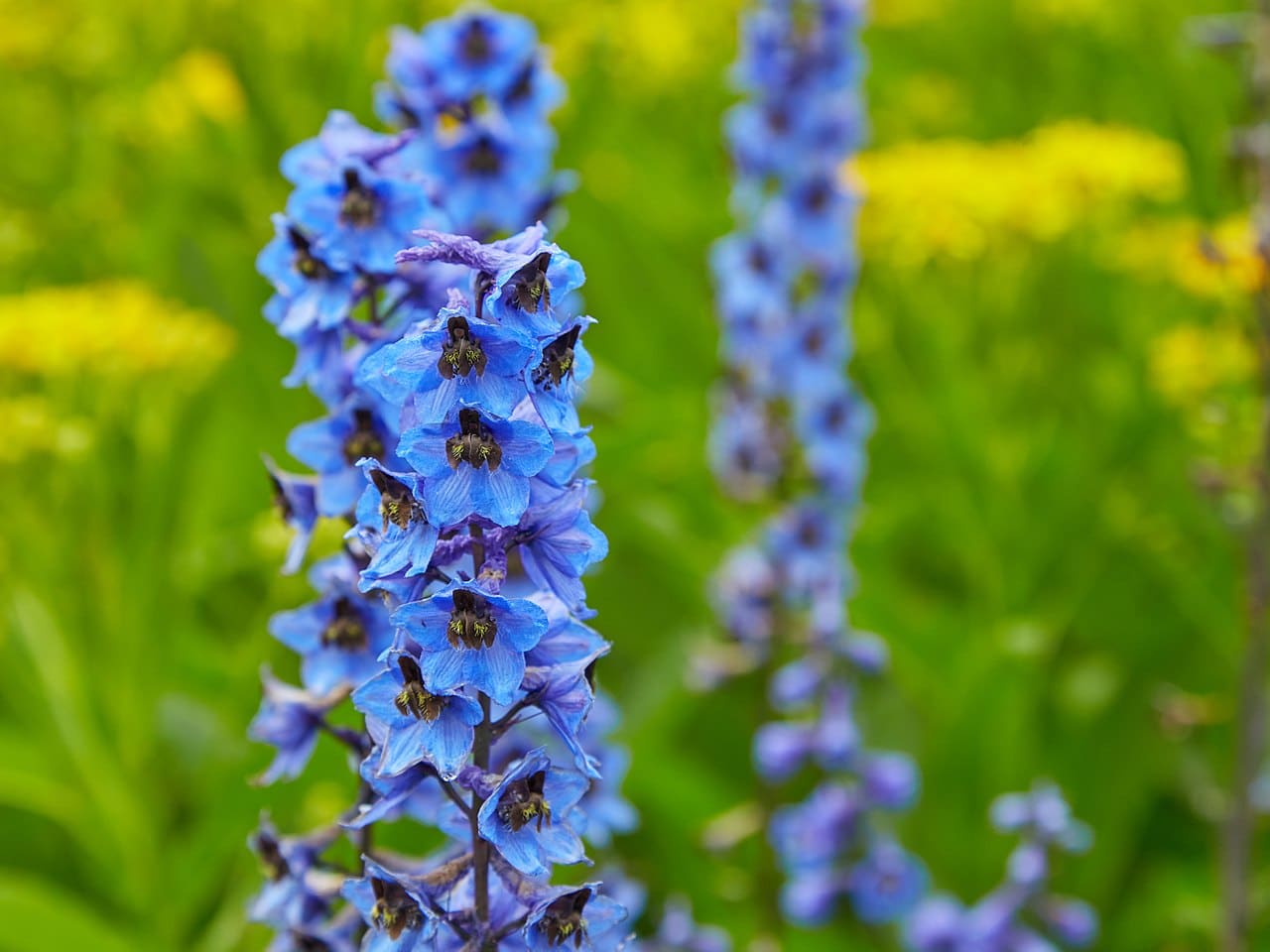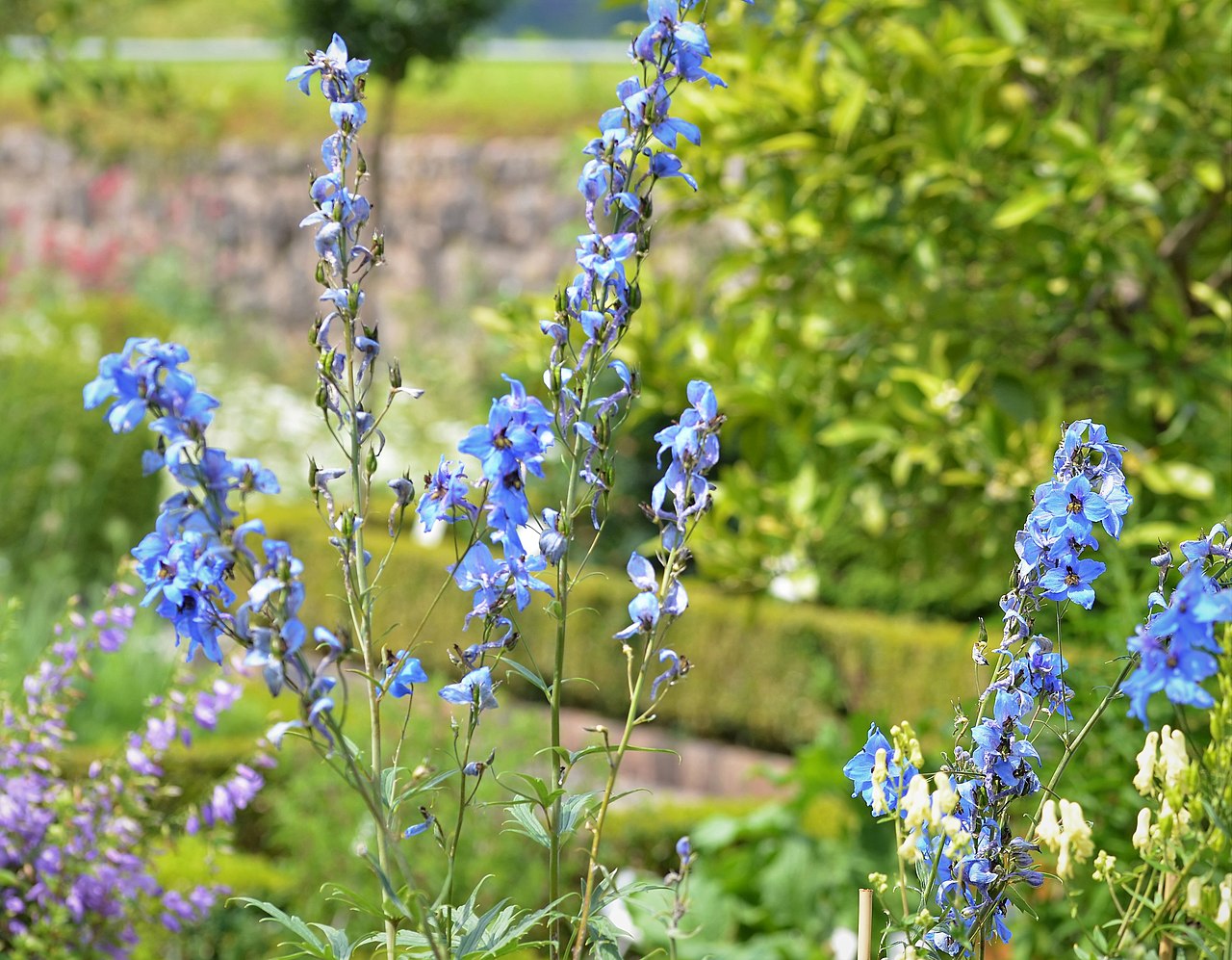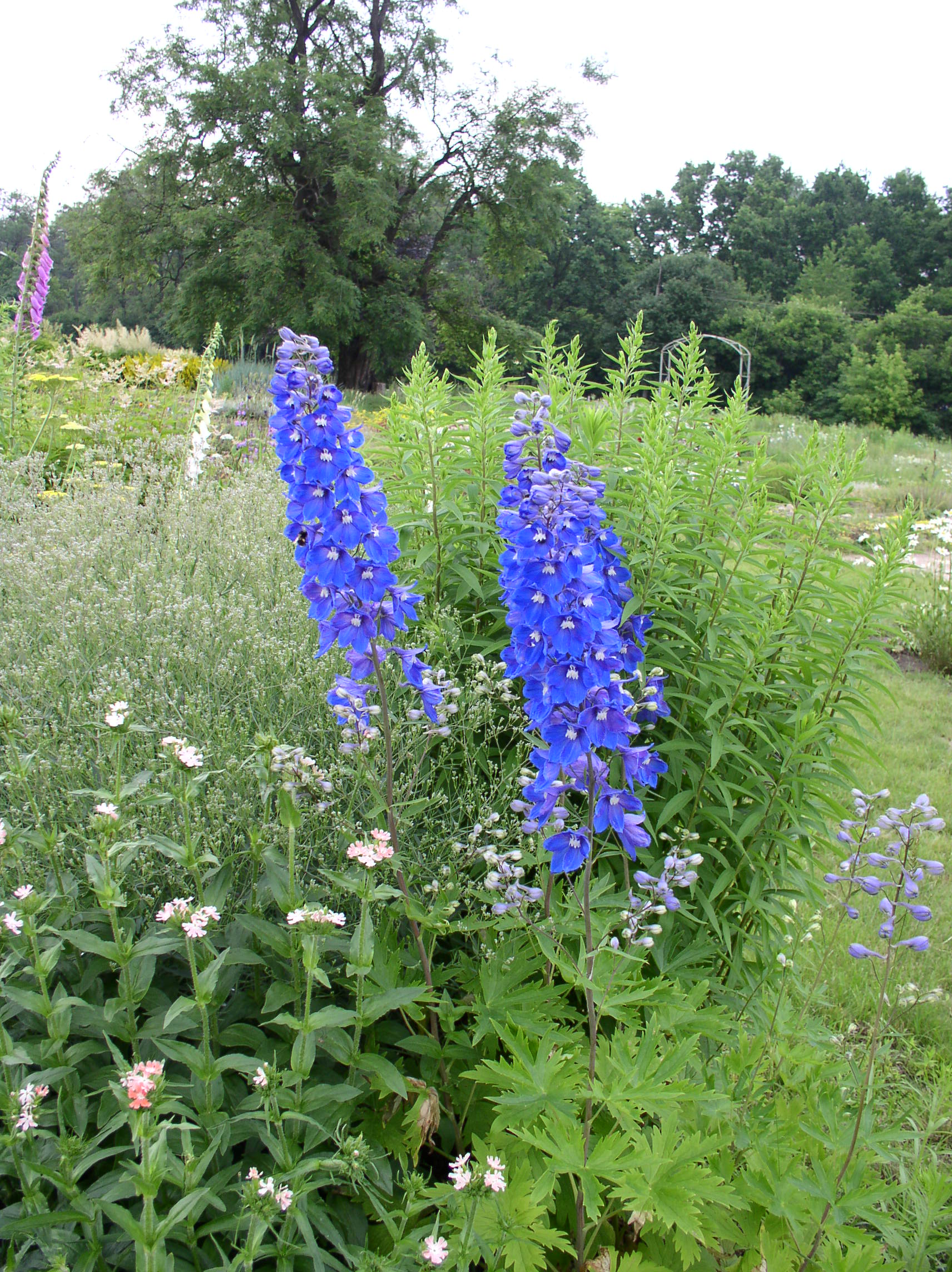
Image - Wikimedia / DoF CC-BY-X
Do you want a herbaceous plant that will live for several years and that also produces lots of flowers each spring? Then let me introduce you to the Delphinium elatum, a species that due to its height is perfect in alignments, delimiting roads or trails.
Of course, it is also ideal to have in pots. On a sunny balcony or patio, it's sure to stand out 😉.
Origin and characteristics of Delphinium elatum

Image - Wikimedia / Buendia22
It is a perennial herbaceous plant native to Eurasia. It is popularly known as larkspur, like the rest of the species of the genus Delphinium. Grows to a maximum height of 1 meter. The leaves are petiolate, palmatisect, lobed, composed of about 5 green segments or lobes.
The flowers sprout from a long flower stalk, and are grouped in racemes. These are deep or bright blue, violet, pink, purple, or bi-colored. They appear during the spring, and they turn out to be very attractive to beneficial insects, such as bees.
How do you take care of yourself?
El Delphinium elatum it is a plant that will give you great satisfaction. It is quite easy to care for and, as if that were not enough, it resists cold and frost reasonably well. However, to avoid problems, we recommend that you keep the following in mind:
Location
Place your plant outside, preferably in full sun. In the event that you cannot put it there, if it is in an area where it gives it at least 4 hours of direct light, it will be fine.
Earth
- Flower pot: you can fill it with universal substrate. To improve drainage, it is interesting to first add a layer of volcanic clay, claystone, or the like.
- Garden: grows in fertile soils, with good drainage.
Irrigation
Irrigation will be moderate to frequent, depending on the climate and the season of the year in which we are, as well as if it is in a pot or in the ground.
RoughlyYou have to know that a potted plant will need more frequent watering than one that is in the ground, as the substrate dries more quickly. In addition, in summer you will also have to water more than in winter, for the same reason.
The best thing to do is to check the humidity of the earth, either by introducing a thin wooden stick, or if it is in a pot, weighing it once watered and again after a few days.
And if there are still doubts, you have to know that the Delphinium elatum It grows next to canals and ditches, in ditches and on damp edges, and in similar places, always near damp areas. So that you have to water an average of 3-4 times in summer, and an average of 1-2 times a week the rest of the year.
Subscriber

Image - Wikimedia / Danny Steaven
It must be paid from early spring to late summer, for example with guano or compost.
Another option is to pay it with fertilizers for flower plants, following the indications specified on the package.
Multiplication
Larkspur multiplies by seeds in spring. To do this, follow these steps:
- First, you have to choose the seedbed. This can be a flowerpot, milk or yogurt containers ... From experience, we recommend the seedling trays more, since this way the seeds are more controlled.
- Afterwards, it is filled with substrate for seedlings and watered thoroughly.
- Then, a maximum of 3 seeds are placed in each one, and they are buried a little bit.
- Next, a little copper or sulfur is sprinkled in order to prevent fungus.
- Finally, the seedbed is placed outside, in semi-shade or in the sun.
Keeping the substrate moist (not flooded), the seeds will germinate after approximately 15-20 days.
Planting or transplanting time
It has to be planted in the ground in springAs soon as it has a height of about 15 or 20 centimeters, since if it has less, the risk of losing it is quite high.
In the event that you have it in a pot, you should change it as soon as you see the roots come out of the drainage holes.
Pruning
You have to cut the dry leaves and the withered flowers. In this way, it will continue to look beautiful and, incidentally, will prevent this decomposing material from attracting insects or microorganisms that are harmful to the plant.
Plagues and diseases
It can be affected by aphids, Red spider, snails and slugs, as well as powdery mildew, and botrytis.
Pests are treated with diatomaceous earth, potassium soap, or neem oil; diseases instead with fungicides.
Rusticity
It resists frosts of up to -7ºC.
What uses is given to Delphinium elatum?

Image - Wikimedia / Hanna Zelenko
It is a plant that it is used only as an ornamental. It is perfect for growing in pots, or to mark paths or trails for example.
Although it can grow up to a meter in height, it can be had in gardens, patios and large and small terraces.
What did you think of this plant?